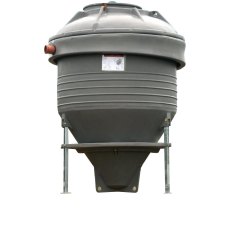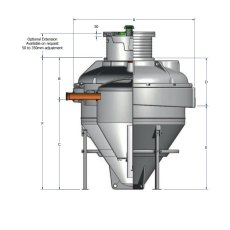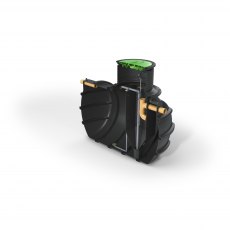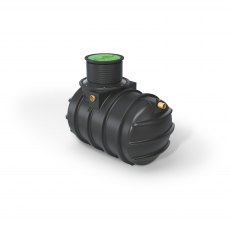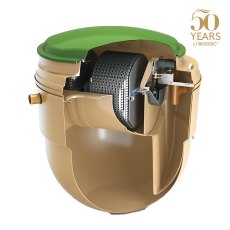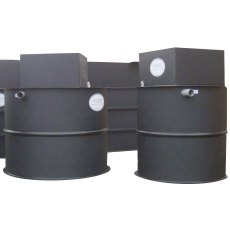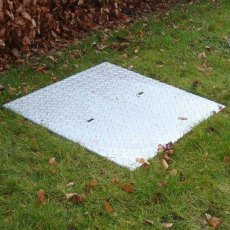Sewage Treatment Plants - How do they work?

A sewage treatment plant, or a wastewater treatment plant, is a sewage filtration system installed at a property where access to a mains sewer is not viable. It is designed to treat wastewater and sewage from homes, industrial and business locations to make it safe for disposal or reuse.
A sewage treatment plant works by collecting waste, from toilets, separating and then filtering the sewage before discharging non-polluting water. This type of system is not only efficient, but if you are a homeowner whose property cannot be connected to the mains sewage, you are responsible for disposing your waste in a non-polluting way, these systems do dispose in a non-polluting way.
An alternative to Sewage treatment plants is septic tanks, however these are subject to stricter regulations, so if this is of interest, it's best to check with your local authority to see if this is a viable option for you.
As a nation, we are noticing that many of our waterways are becoming highly polluted (only 14% of England's rivers meet 'good ecological health', according to the Rivers Trust) and the water sector contributes to some of this pollution, by releasing sewage into the water courses. A sewage treatment plant prevents environmental pollution, protects public health and promotes sustainable water use.
Here at Tanks Direct we offer sewage treatment plants, which produce a cleaner, more environmentally, safer solution compared to a septic tank, depending on location.
What is a sewage treatment plant?”
A domestic sewage plant is very similar, in its process, to a septic tank, by both separating solid and liquid waste. However, the sewage treatment plant is more advance, as it treats the liquid waste and not just holds it. This is in turn leads to higher quality effluent.
The first steps of the unit's process is the collection of the liquid waste from any toilets, sinks, baths, washing machines and dishwashers. When it enters the treatment plant, it enters the 1st chamber, where the waste is separated out. The solids sink to the bottom of the tank.
The remaining liquid waste is channelled into chamber 2 - a specially engineered area of the tank, where the naturally occurring bacteria, begins to break the sewage down, all the while the motor is moving the water around, creating air, so the bacteria can eat and breed. The filtered liquid is clean enough, that it could be passed out of the unit into either a watercourse (e.g. a river or stream) or into a drainage field. (Please consult the environmental agency, to see if this is possible for your area).
Over time, the solids collected in chamber 1 will accumulate, resulting in the unit being cleared of the solid waste by a process called 'de-sludging'.
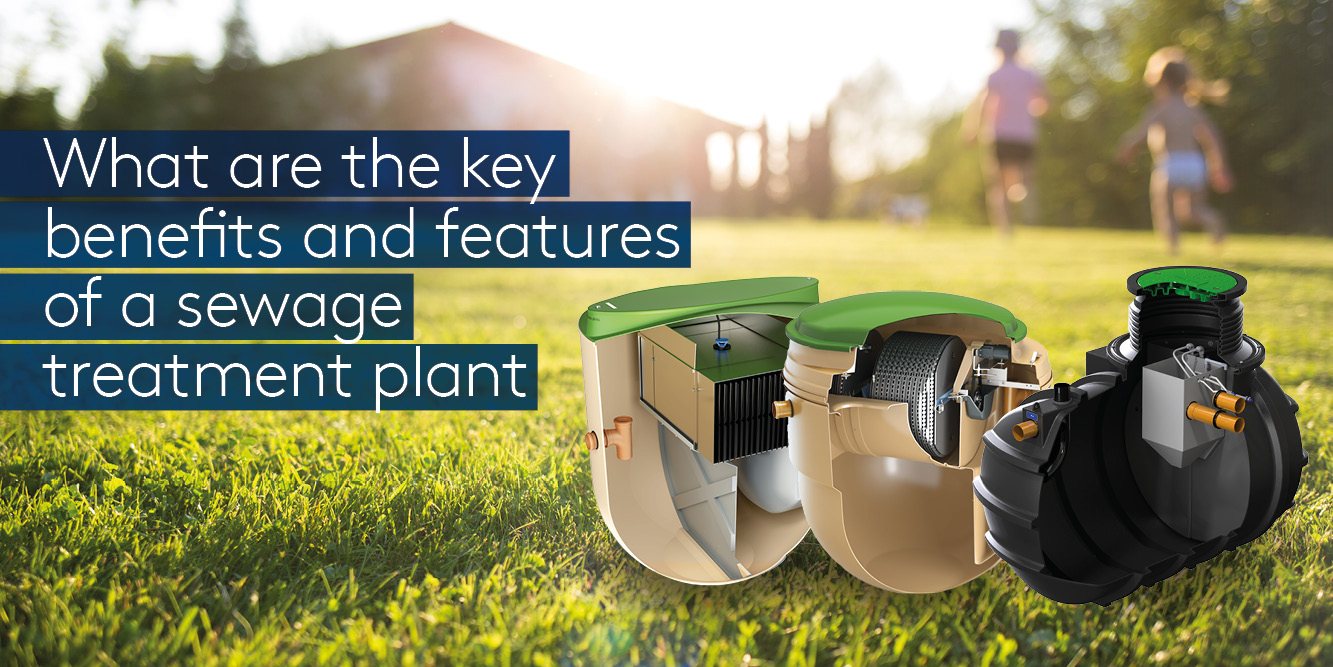
What are the key benefits of a sewage treatment plant?
The benefits of having a domestic sewage treatment plant installed are: -
- Environmentally friendly – domestic wastewater treatment plants use natural biological processes to break down sewage and safely process harmful compounds. This reduces pollution and is vital for protecting the local flora and fauna.
- Under the legislation of 2020, our sewage treatment plants are legally compliant compared to the septic tanks which are not, with regard to discharging into watercourses. For more information regarding the legislation, please see our article - Sewage Treatment Plants Explained
- Safety – untreated sewage, or old sewage systems can release hazardous materials into your local watercourses.
- A sewage treatment plant actually treats the wastewater and you can sample it to see whether it’s working correctly.
- Efficient and affordable running and maintenance costs. The Sewage treatment systems require little or no (dependent on the unit) electricity to run. They are efficient at breaking down the waste, reducing the risks of blockages.
- Long-lasting - most modern plants have a long lifespan and are a solid investment for any property. A solution like the Klaregster BioDisc has a 7-year warranty* and has the potential to have a 20 year life cycle when maintained correctly.
What are the environmental impacts of a sewage treatment plant?
A well-designed and properly maintained sewage treatment plant can have positive environmental impacts by reducing water pollution and protecting aquatic ecosystems. However, if not properly managed, a sewage treatment plant can also have negative impacts such as odours, noise pollution and emissions of greenhouse gases.
Tanks Direct offer a great choice of sewage treatment plants from low to premium costs. The Klargester BioDisc is our top of the range sewage treatmnet plant, offering no odour, no noise and up to 7 years warranty. .
Preparing to install a sewage treatment plant?
There are a few things to consider before installing a new treatment plant, including: -
- Getting planning permission
- Building regulations approval
- Applying for a permit, if you do not meet the general building rules issued by the Environment Agency
To connect to a public foul sewer, you will need to be within 30 meters of the sewer, however if you fall outside this, you may need a Sewage Treatment plant. If you're unsure of where your nearest public sewer is, you can either ask a neighbour or contact your local water authority.
How to maintain a sewage treatment plant?
With the right maintenance, a sewage treatment plant can last a long time without requiring any significant work. Some things you can do to help maintain your unit are listed below -
Check for Pollution
It is worth checking your sewage plant once a month for pollution, to do this you check the area in which the sewage is released for any signs of pollution. Depending on where you are releasing your effluent, depends on what thing to look out for. Some of the most common are below.
Releasing into a watercourse, check for sewage smells, overflowing sludge or signs of scum or foam where you released the sewage.
Releasing into the ground, check for sewage smells and any signs that your sewage isn’t draining properly.
Make sure you are ONLY disposing of appropriate waste via your toilets, sinks and drains
All the below items can interfere with the working mechanisms and the natural ecosystem of the bacteria, resulting in more maintenance, if these items make their way into the system.
- Nappies, wet wipes, sanitary towels, and cotton buds
- Cooking oils and fats
- Strong Chemicals like weed killer, insecticides, undiluted disinfectants and bleaches, paint thinner and turpentine.
Regular emptying (De-sludging)
Most manufacturers recommend that the tanks are emptied roughly once a year to keep sludge from building up, however some low-budget options may need emptying more frequently per year.
Overall, a Lack of maintenance can lead to additional costs to replace component parts and reducing the life of the unit which has been installed.
Glossary of terms
Effluent - liquid waste or sewage discharged into a river or the sea.
Watercourse - A watercourse is defined as a brook, stream, or artificially constructed water channel.
Drainage Field - allows infiltration of treated/partially treated waste into the ground at a controlled rate. The field has a series of trenches containing perforated pipes and gravel or stone materials covered by a layer of soil.
Desludge - Desludging is the process of removing sediments by draining and cleaning a tank.

